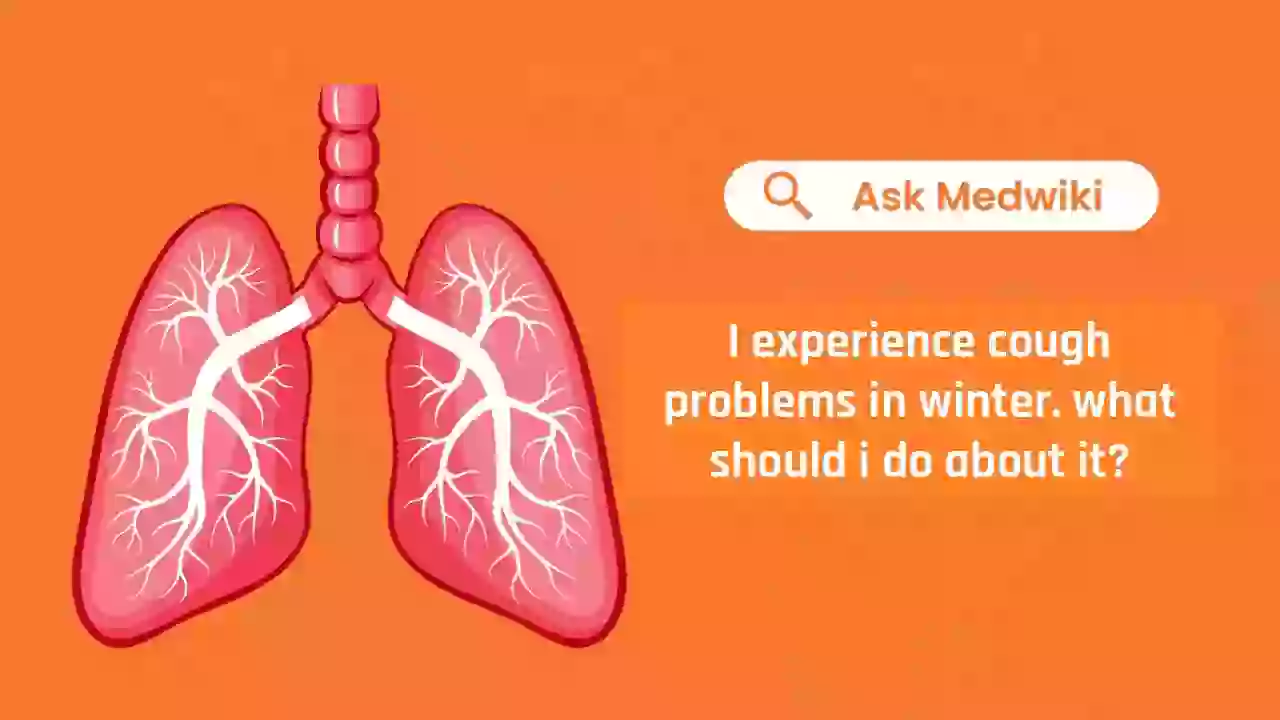Hey there! Dealing with a cough in winter can be a bit annoying, but here are some tips to help you feel better: - **Stay Hydrated**: Drink plenty of water to keep your throat moist. - **Warm Drinks**: Sip on warm teas or broths to soothe your throat. - **Humidifier**: Use a humidifier in your room to add moisture to the air. - **Honey**: A spoonful of honey can help calm a cough. - **Rest**: Make sure you're getting enough sleep to help your body recover. If your cough persists or gets worse, it's a good idea to talk to a healthcare professional. Stay warm and take care!
Cofdex syrup is commonly used to relieve symptoms of cough and cold, such as congestion and throat irritation. It typically contains a combination of ingredients like antihistamines and decongestants. The dosage depends on age and specific symptoms, so it's important to follow the instructions on the label or consult a healthcare provider. Possible side effects include drowsiness, dizziness, and dry mouth. Always use as directed and consult a doctor if symptoms persist.
Increasing lung capacity can be beneficial for overall health and can improve your performance in physical activities. Here are some ways to help boost your lung capacity: - **Deep Breathing Exercises**: Practice deep breathing by inhaling slowly through your nose, holding your breath for a few seconds, and then exhaling slowly through your mouth. This helps expand your lung capacity over time. - **Diaphragmatic Breathing**: Also known as "belly breathing," this technique involves breathing deeply into your diaphragm rather than shallowly into your chest. It strengthens the diaphragm and increases lung efficiency. - **Aerobic Exercise**: Engage in regular aerobic activities like walking, running, swimming, or cycling. These exercises increase your heart rate and improve lung function. - **Interval Training**: Incorporate short bursts of intense activity followed by rest periods. This can help improve your lung capacity and endurance. - **Pursed-Lip Breathing**: Inhale through your nose and exhale slowly through pursed lips. This technique helps keep airways open longer and improves lung function. - **Stay Active**: Regular physical activity keeps your lungs healthy and can prevent them from becoming stiff or weak. - **Avoid Smoking**: Smoking damages lung tissue and reduces lung capacity. Avoiding smoking and secondhand smoke is crucial for lung health. - **Maintain Good Posture**: Sitting and standing up straight allows your lungs to expand fully, improving their capacity. Remember, it's important to consult with a healthcare professional before starting any new exercise routine, especially if you have existing health conditions. Keep practicing these techniques, and over time, you'll likely notice improvements in your lung capacity and overall respiratory health! 😊
Kufril LS is a medication commonly used to help relieve symptoms of cough and congestion. It contains three active ingredients: Ambroxol, which helps break down mucus; Guaifenesin, which thins mucus to make it easier to cough up; and Terbutaline, which relaxes the muscles in the airways to improve breathing. It's often prescribed for respiratory conditions like bronchitis or asthma.
Lung damage can manifest in various ways, and it's important to recognize the symptoms early. Here are some common signs that might indicate lung damage: 1. **Persistent Cough**: - A cough that doesn't go away or gets worse over time. 2. **Shortness of Breath**: - Difficulty breathing or feeling out of breath, especially during physical activities. 3. **Chest Pain**: - Discomfort or pain in the chest, which may worsen with deep breaths or coughing. 4. **Wheezing**: - A whistling or squeaky sound when breathing, often associated with asthma or other lung conditions. 5. **Chronic Mucus Production**: - Producing mucus (phlegm) that lasts for a month or longer. 6. **Fatigue**: - Feeling unusually tired or lacking energy, even after resting. 7. **Frequent Respiratory Infections**: - Getting colds, bronchitis, or pneumonia more often than usual. 8. **Coughing Up Blood**: - Coughing up blood or rust-colored phlegm can be a serious sign of lung damage. 9. **Unexplained Weight Loss**: - Losing weight without trying, which can be a sign of a serious underlying condition. 10. **Swelling in the Lower Body**: - Swelling in the legs, ankles, or feet, which can occur if the heart is affected by lung issues. If you or someone you know is experiencing these symptoms, it's important to consult a healthcare professional for a proper diagnosis and treatment. Early detection and management can help prevent further damage and improve quality of life.
Our lungs are vital for breathing and overall health, so it's important to protect them from damage. Here are some factors that can harm your lungs: 1. **Smoking**: - **Cigarettes and Vaping**: Smoking is a leading cause of lung cancer and chronic obstructive pulmonary disease (COPD). 2. **Air Pollution**: - **Outdoor and Indoor Pollution**: Exposure to pollutants from vehicles, factories, and even household products can harm lung tissue. 3. **Secondhand Smoke**: - **Passive Smoking**: Breathing in smoke from others' cigarettes can be just as harmful as smoking yourself. 4. **Infections**: - **Respiratory Infections**: Conditions like pneumonia and tuberculosis can cause lung damage if not treated properly. 5. **Occupational Hazards**: - **Dust and Chemicals**: Jobs that expose you to dust, asbestos, or harmful chemicals can increase the risk of lung diseases. 6. **Radon Gas**: - **Natural Gas**: Radon is a naturally occurring gas that can seep into homes and increase the risk of lung cancer. 7. **Chronic Diseases**: - **Asthma and COPD**: These conditions can cause long-term damage if not managed properly. 8. **Allergens**: - **Pollen and Mold**: Allergens can trigger asthma attacks and other respiratory issues. 9. **Physical Inactivity**: - **Lack of Exercise**: Regular physical activity helps keep your lungs healthy and efficient. 10. **Poor Diet**: - **Unhealthy Eating Habits**: A diet low in fruits and vegetables can affect lung health. To protect your lungs, avoid smoking, stay active, eat a balanced diet, and ensure your living environment is free from pollutants and allergens. Regular check-ups with a healthcare provider can also help monitor and maintain lung health.
If you're dealing with a cough, there are several ways to find relief. Here are some tips that might help: 1. **Stay Hydrated**: - **Drink Plenty of Fluids**: Water, herbal teas, and broths can help thin mucus and soothe your throat. 2. **Use a Humidifier**: - **Moist Air**: Adding moisture to the air can help ease coughing, especially if it's dry in your home. 3. **Honey and Warm Drinks**: - **Honey**: A spoonful of honey or adding it to warm tea can soothe a sore throat and reduce coughing. 4. **Over-the-Counter Remedies**: - **Cough Suppressants**: Medications like dextromethorphan can help reduce the urge to cough. - **Expectorants**: Guaifenesin can help loosen mucus, making it easier to cough up. 5. **Avoid Irritants**: - **Smoke and Strong Odors**: Stay away from cigarette smoke and strong perfumes, which can trigger coughing. 6. **Elevate Your Head**: - **Sleeping Position**: Use extra pillows to keep your head elevated at night, which can help reduce coughing. 7. **Gargle with Salt Water**: - **Soothing Effect**: Gargling with warm salt water can help soothe a sore throat and reduce coughing. 8. **Consult a Healthcare Provider**: - **Persistent Cough**: If your cough lasts more than a few weeks or is accompanied by other symptoms like fever or shortness of breath, it's important to see a doctor. By trying these methods, you may find relief from your cough. However, if it persists or worsens, seeking medical advice is crucial to rule out any underlying conditions.
If you're experiencing increased coughing, there are several strategies you can try to help control it. Here are some tips: 1. **Stay Hydrated**: - **Drink Plenty of Fluids**: Water, herbal teas, and broths can help thin mucus and soothe your throat. 2. **Use a Humidifier**: - **Moist Air**: Adding moisture to the air can help ease coughing, especially if it's dry in your home. 3. **Honey and Warm Drinks**: - **Honey**: A spoonful of honey or adding it to warm tea can soothe a sore throat and reduce coughing. 4. **Over-the-Counter Remedies**: - **Cough Suppressants**: Medications like dextromethorphan can help reduce the urge to cough. - **Expectorants**: Guaifenesin can help loosen mucus, making it easier to cough up. 5. **Avoid Irritants**: - **Smoke and Strong Odors**: Stay away from cigarette smoke and strong perfumes, which can trigger coughing. 6. **Elevate Your Head**: - **Sleeping Position**: Use extra pillows to keep your head elevated at night, which can help reduce coughing. 7. **Gargle with Salt Water**: - **Soothing Effect**: Gargling with warm salt water can help soothe a sore throat and reduce coughing. 8. **Consult a Healthcare Provider**: - **Persistent Cough**: If your cough lasts more than a few weeks or is accompanied by other symptoms like fever or shortness of breath, it's important to see a doctor. By trying these methods, you may find relief from your cough. However, if it persists or worsens, seeking medical advice is crucial to rule out any underlying conditions.
Shorts
Dangers of Secondhand Smoke.
Dr. Beauty Gupta
Doctor of Pharmacy
Care for your Lungs!
Mrs. Prerna Trivedi
Nutritionist












